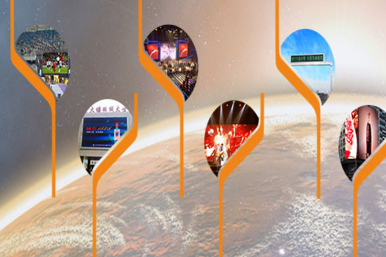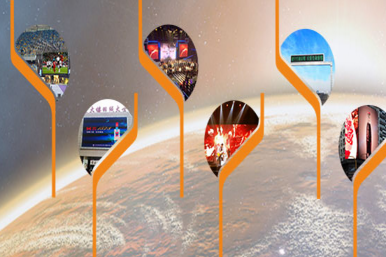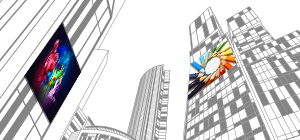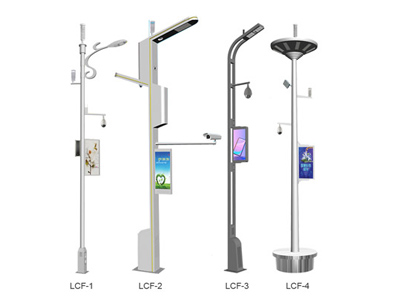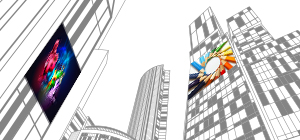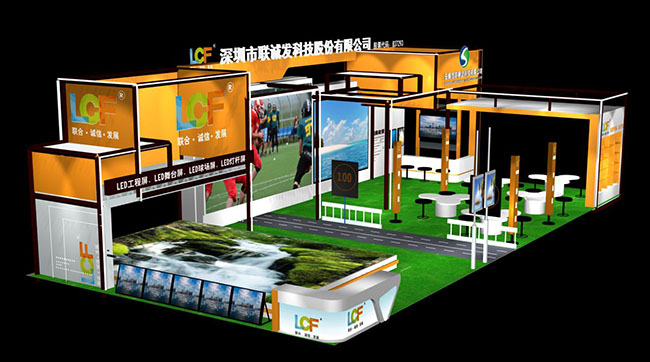Publisher: Supplier of LED Display Time: 2017-03-15 14:14 Views: 4234

1. What is LED?
LED refers to light-emitting diodes. The LED in the display industry refers to LEDs that can emit visible wavelengths.
2. What is a pixel?
The smallest light-emitting unit of an LED display has the same meaning as the pixel in an ordinary computer monitor.
3. What is the pixel pitch (dot pitch)?
The center distance between two adjacent pixels. The smaller the distance, the shorter the visible distance. People in the industry usually abbreviate P to indicate the dot pitch. For example, Liancheng's new product P1.667 has a pointing pitch of 1.667mm.
4. What is pixel density?
Is also called dot matrix density, usually refers to the number of pixels per square meter of the display screen.
5. What is an LED display module?
Is composed of several display pixels, which are independent in structure and can form the smallest unit of the LED display screen.
6. What is DIP?
DIP refers to dual in-line assembly.
7. What is SMT? What is SMD?
SMT is surface mount technology, which is currently the most popular technology and process in the electronics assembly industry; SMD is a surface mount device.
8. What is an LED display module?
A basic unit with a certain circuit and installation structure, a display function, and a simple assembly to realize the display function.
9. What is an LED display?
A display screen composed of an array of LED devices through a certain control method.
10. What is a plug-in module, and what are the advantages and disadvantages?
It means that the DIP packaged lamp passes the lamp pin through the PCB board, and fills the tin into the lamp hole by soldering. The module made by this process is the plug-in lamp module. The advantages are: high brightness, good heat dissipation, but the disadvantages are The pixel density is small.
11: What is a surface mount module? What are the advantages and disadvantages?
Surface mount is also called SMT. The SMT packaged lamp is welded on the surface of the PCB board through a welding process, and the lamp pins do not need to pass through the PCB board. The module made by this process is called a surface mount module. The advantage is: good display effect. The pixel density is large, suitable for indoor viewing: the disadvantage is that the brightness is not high enough, and the heat dissipation of the lamp itself is not good enough.
12. What is a sub-surface mount module? What are the advantages and disadvantages?
Sub-surface mount is a product between DIP and SMT. The packaging surface of its LED lamp is the same as that of SMT, but its positive and negative pins are the same as DIP. They are also soldered through the PCB during production. The advantages are: high brightness and good display effect, but the disadvantages are: complicated process and difficult maintenance;
13. What is 3 in 1? What are its advantages and disadvantages?
Refers to the SMT lamps packaged with three different colors of RGB LED chips are arranged vertically together at a certain interval, which not only has all the advantages of 3 in 1, but also solves the various shortcomings of 3 in 1: complex process and difficult maintenance .
14. What is three in one?
Is to vertically juxtapose three RGB SMT lamps with independent packages according to a certain pitch. This not only has the advantages of 3 in 1 but also solves the various shortcomings of 3 in 1.
15. What is a dual-color, pseudo-color, full-color display?
Different color LEDs can form different display screens. Dual primary colors are composed of red, green or yellow and green. Pseudo-color is composed of three different colors of red, yellow-green and blue. Full color is composed of red. , Pure green, pure blue three different colors.
16: What is luminous brightness?
The intensity of light emitted by a unit area of the LED display, the unit is CD/square meter, which is simply the intensity of light emitted by one square meter of the display;
17: What is the brightness level?
The level of manual or automatic adjustment of the brightness of the whole screen from the bottom to the highest brightness.
18. What is gray scale?
Under the same brightness level, the number of technical processing levels from the darkest to the brightest of the display screen
19. What is the maximum brightness?
Under a certain environmental illuminance, when each primary color of the LED display is at the maximum brightness and maximum gray level;
20. What is moiré?
Is when shooting a full-color LED display screen, some irregular water ripples will appear on the screen of the LED display screen. These water ripples are called "moir patterns" in physics.
21. What is a PCB?
PCB is (abbreviation of printed circuit board) printed circuit board
22. What is the cell board specification?
Refers to the size of the cell board, usually expressed by the expression of the length of the cell board multiplied by the width, in millimeters. (E.g. 48×244)
23. What is the resolution of the unit board?
Refers to the number of pixels in a unit board, usually expressed by the number of rows of pixels of the unit board multiplied by the number of columns. (Eg: 64×32)
24. What is BOM?
BOM is (abbreviation of bill of material) bill of materials
25: What is white balance, and what is white balance adjustment?
What we call white balance refers to the balance of white, that is, the balance of the brightness ratio of the three colors of RGB; the adjustment of the brightness ratio of the three colors of RGB and the white coordinate is called white balance adjustment;
26: What is contrast?
The ratio of the maximum brightness of the LED display to the background brightness under a certain environmental illumination.
27. What is color temperature?
When the color emitted by the light source is the same as the black body at a certain temperature, the temperature of the black body is called the color temperature of the light source.
28. What is chromatic aberration?
The LED display screen is composed of red, green and blue to produce various colors, but these three colors are made of different materials, the viewing angle is different, and the spectral distribution of different LEDs are changed. These differences that can be observed are called For the color difference. When observing the LED from a certain angle, its color changes. The human eye's ability to judge the color of the real picture (such as a movie picture) is better than observing the picture produced by a computer.
29. What is the frame change frequency?
The number of times the display screen information is updated per unit time;
30. What is the refresh rate?
The number of times the display screen is repeatedly displayed on the display screen in unit time;
31: What is a perspective? What is the viewing angle? What is the best perspective?
The viewing angle is when the brightness of the viewing direction drops to 1/2 of the brightness of the normal line of the LED display. The angle formed by the two viewing directions of the same plane and the normal direction. Divided into horizontal and vertical viewing angles; the viewing angle is just the direction in which the image content on the display can be seen, and the angle formed by the normal of the display. The best viewing angle is to be able to just see the content on the display, and not flat, the angle formed by the clearest direction of the image content and the normal;
32: What is the best viewing distance?
Is the vertical distance of the clearest position of the image content relative to the screen body that can just see the content on the display screen completely without flat color:
33: What is the point of out of control? How many kinds?
Pixels whose light-emitting state does not meet the control requirements, out-of-control points are divided into three types: blind spots (also known as dead spots) and constant bright spots (or dark spots);
34. What is a static drive:? What is a scan driver? What is the difference between the two?
The “point-to-point” control from the output pin of the driver IC to the pixel point is called static driving, and the “point-to-column” control from the output pin of the driver IC to the pixel point is called scan driving. It needs a row control circuit: It can be clearly seen from the driver board that static driving does not require a line control circuit, which is costly, but has good display effect, good stability, and low brightness loss; scanning driving requires a line control circuit, but the cost is low. Poor effect, high brightness loss, etc.;
35. What is constant current drive? What is constant voltage drive?
Constant current refers to the constant output current value specified in the design of the driver IC in the allowable working environment: constant voltage refers to the constant output voltage value specified in the design of the driver IC in the allowable working environment;
36. What is the general aspect ratio of LED display?
Graphic screen: Determined according to the displayed content; Video screen: Generally 4:3 or close to 4:3; the ideal ratio is 16:9.
37. The number of points that a set of control system can control?
Communication screen A card: single color, dual color 1024×64; communication screen B card: single color: 896×512 dual color: 896×256; DVI dual color screen: 1280×768; DVI full color screen: 1024×512
38. What is nonlinear correction?
If the digital signal output by the computer is displayed on the LED display without correction, there will be color distortion, so in the system control circuit, the original computer output signal is calculated through a non-linear function to calculate the signal required by the display. Because of the nonlinear relationship between the front and rear signals, we often call it nonlinear correction.
39. What is the rated working voltage? What is the working voltage? What is the supply voltage?
The rated working voltage refers to the voltage when the voltage is used for normal operation; the working voltage refers to the voltage value of the electrical appliance in the rated voltage range and when working normally: the power supply voltage is divided into AC and tributary power supply voltages. Our actual AC power supply voltages are both AC220V-240V, DC power supply voltage is generally 5V DC12V solar power supply is generally 12V
40. What is color distortion?
Refers to the difference between the display of the same object in the natural world and the display on the human eye.
41: What is a synchronous system and what is an asynchronous system?
Synchronous and asynchronous are relative to the computer. The so-called synchronous system refers to the LED display control system that displays the content displayed on the display screen and the computer monitor synchronously; the asynchronous system refers to the pre-stored display data edited by the computer In the display control system, the normal display of the LED display will not be affected after the computer is shut down. Such a control system is an asynchronous control system
42. What is blind spot detection technology?
Through the upper software and the underlying hardware, it can detect the blind spots (LED open circuit and short circuit) on the display screen, and form a report to tell the LED screen manager. Such a technology is called blind spot detection technology;
43. What is power detection?
Through the upper software and the underlying hardware, the working conditions of each power supply on the display can be detected, and a report can be formed to tell the LED screen manager. Such a technology is called power detection technology
44. What is brightness detection? What is brightness adjustment?
The brightness in the brightness detection refers to the brightness of the environment where the LED display is located. The light sensor detects the brightness of the environment where the display is currently located. This detection method is called brightness detection; the brightness mentioned in the brightness adjustment refers to the LED display The emitted brightness and the detected data are fed back to the LED display control system or control computer, and then the brightness of the display is adjusted according to this data, which is called brightness adjustment;
45. What is a real pixel? What is a virtual pixel? What kinds of virtual pixels are there? What is pixel sharing?
Real pixels refer to the 1:1 relationship between the number of physical pixels on the display screen and the actual pixels displayed. How many pixels are actually displayed on the display screen can only display image information. Virtual pixel refers to the 1:N (N=2, 4) relationship between the number of physical pixels of the display screen and the number of pixels actually displayed. It can display image pixels 2 or 4 times more than the actual pixels of the display screen; virtual Pixels can be divided into software virtual and hardware virtual according to the way of virtual: according to the multiple relationship, it is divided into 2 times virtual and 4 times virtual, according to the row of lights on a module, it is divided into: 1R1G1B virtual and 2R1G1B virtual;
